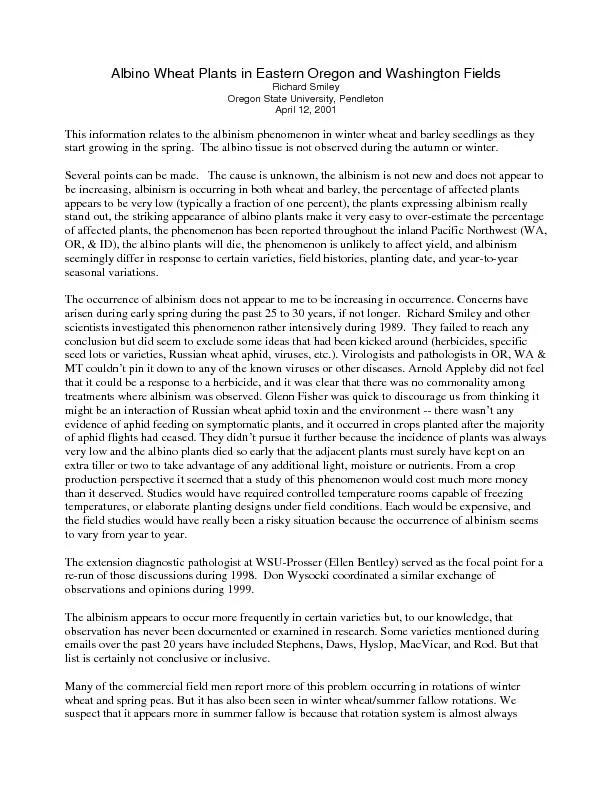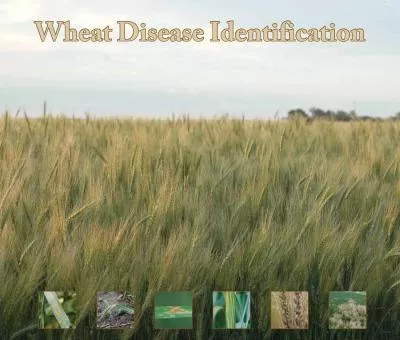PDF-Albino Wheat Plants in Eastern Oregon and Washington Fields
Author : yoshiko-marsland | Published Date : 2016-09-16
Richard Smiley Oregon State University Pendleton April 12 2001 This information relates to the albinism phenomenon in winter wheat and barley seedlings as they start
Presentation Embed Code
Download Presentation
Download Presentation The PPT/PDF document "Albino Wheat Plants in Eastern Oregon an..." is the property of its rightful owner. Permission is granted to download and print the materials on this website for personal, non-commercial use only, and to display it on your personal computer provided you do not modify the materials and that you retain all copyright notices contained in the materials. By downloading content from our website, you accept the terms of this agreement.
Albino Wheat Plants in Eastern Oregon and Washington Fields: Transcript
Download Rules Of Document
"Albino Wheat Plants in Eastern Oregon and Washington Fields"The content belongs to its owner. You may download and print it for personal use, without modification, and keep all copyright notices. By downloading, you agree to these terms.
Related Documents














